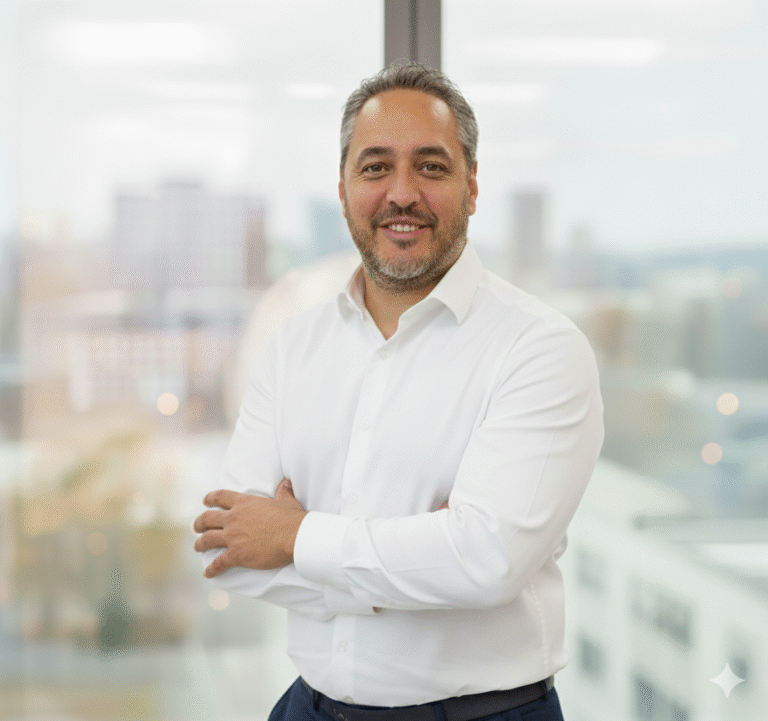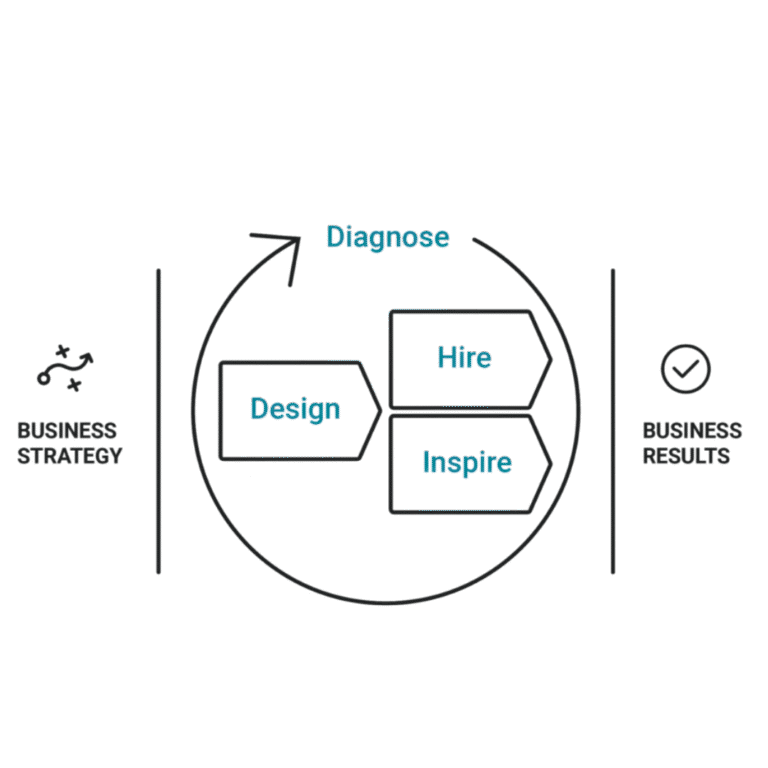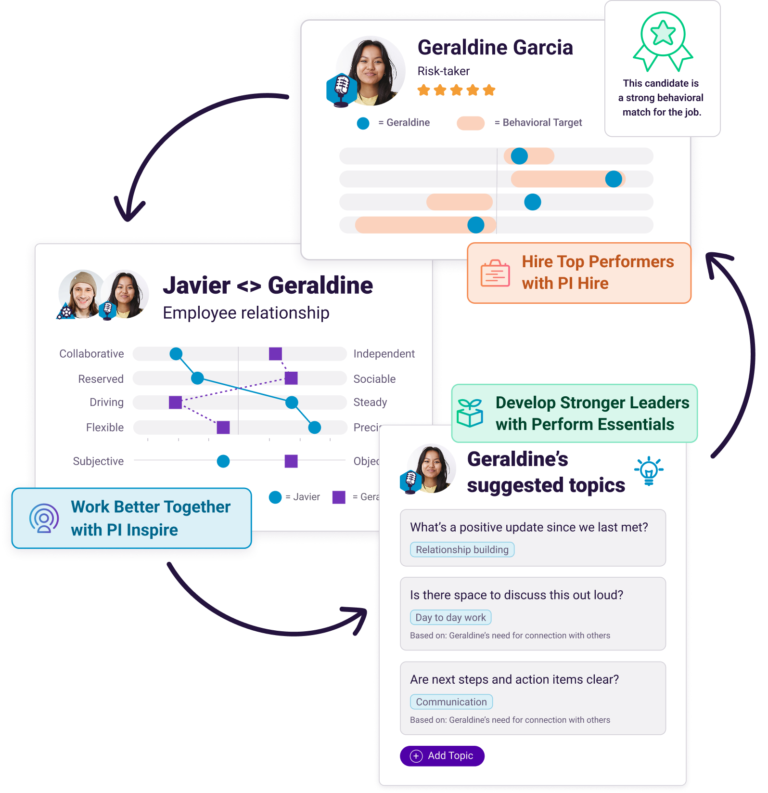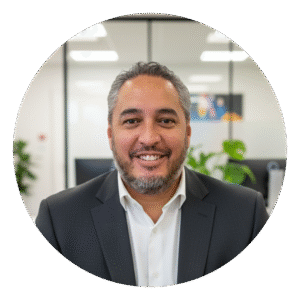Every leader I meet agrees on one thing. Every business problem is really a people problem. When you look behind missed targets, underperforming teams, or stalled growth, you usually find decisions about people that did not go far enough. A mis-hire damages credibility and drains resources. The wrong career move can cost more than money. A manager promoted without the tools to lead will struggle, and the whole team feels the impact.
Research shows that 46% of new hires leave within 18 months of joining. More worryingly, several leaders I have been speaking to lately have seen people leave within just six months. That is not just a failed hire. It is time lost, trust eroded, and momentum gone. It shows how fragile people decisions can be when they are made on instinct.
Leaders are judged by the people they choose. When those choices go wrong, it becomes harder to inspire confidence in teams, peers, and boards. This is why people decisions matter so much. They do not just shape performance today, they shape the future of the business.

Most leaders want to do the right thing for their people and their organisation. They rely on interviews, references, and experience. Sometimes that works. Often it does not. A polished interview is not the same as day-to-day success. A strong technical performer does not always make an effective manager. Without a common language for behaviour and fit, risk creeps in and only shows months later.
Roles are evolving fast. Teams are more cross-functional. Expectations around work have changed. Gut feel alone cannot carry that load. Leaders need a clear, shared way to define success, reduce bias, and align people decisions to strategy. That is where People Optimisation helps. It replaces instinct with insight and gives leaders a path they can stand behind.

I have spent more than a decade working with leaders to secure the best talent. During that time I saw the impact of people decisions across entire organisations. When the right choices were made, businesses grew stronger and people built lasting careers. But when fit was missing, the consequences reached far beyond cost. Careers stalled, confidence was lost, and leaders carried the burden of decisions that did not deliver as they had hoped.
When I was introduced to The Predictive Index®, it changed how I understood those outcomes. For the first time I had a framework that explained what instinct alone could not. PI showed why some people thrived in certain roles but struggled in others. It revealed how teams worked together beneath the surface. Most importantly, it gave leaders a clear and shared language to discuss behaviours, motivations, and risks.
That experience shaped my mission. I came to see that the biggest challenge leaders face is not strategy or technology, but people. The answer is what I call People Optimisation: making every decision about people with insight, evidence, and confidence rather than instinct.

People Optimisation is the discipline of aligning people strategy with business goals. It is about making sure that every decision about people supports the goals of the business. It provides leaders with a clear, evidence-based way to make decisions that last by using science, data, and structured frameworks to reduce risk and improve outcomes. Powered by The Predictive Index® (PI), a talent optimisation platform, it helps leaders make data-driven decisions about their people.

People Optimisation works at three levels:
Individual level
At the individual level, People Optimisation builds self-awareness. Leaders and employees learn how they prefer to work, communicate, and make decisions. That insight supports better coaching, better role choices, and better career moves. When people understand their strengths and are set up to use them, they perform better and tend to stay longer
Team level
At the team level, People Optimisation reveals how different working styles interact. Teams that look balanced on paper can still stall when communication styles clash or when behaviours are heavily weighted in one direction. With PI, leaders can see these dynamics early, prevent unnecessary conflict, and create teams that are collaborative, resilient, and aligned with strategy.
Company level
At the company level, People Optimisation ensures that every role is defined against what the business is trying to achieve. PI software allows leaders to create a benchmark for success in each role and then align hiring, development, and succession planning to that benchmark. The result is a consistent approach to people decisions across the organisation, reducing wasted time and cost while building long-term capability.
A single mis-hire has a visible cost and a hidden cost. The visible cost includes salary during ramp-up, onboarding time, recruitment effort, and the cost to replace. The hidden cost includes lost productivity, lower morale, and missed opportunities. If a role takes three months to replace and a further three months to ramp up, you have already lost half a year of output before you measure the wider impact on the team. Now multiply that across a year of hiring.
The 46% figure matters because it points to a system issue, not isolated events. When nearly half of new hires leave within 18 months, and many within six, it tells us that fit, expectation, and support need attention. People Optimisation tackles those points directly. It aligns requirements up front, gives managers the tools to support people day to day, and monitors where risk is building.
I have spoken to leaders who felt trapped in a cycle of constant recruitment and backfilling roles. They told me about the frustration of losing people within months of hiring them. It was not that these individuals lacked skills. It was that the role was never the right fit. People Optimisation exists to break this cycle and to give leaders a way to make decisions that last.

People Optimisation follows a three-step process: Discover, Diagnose, and Deliver. Each step gives leaders the structure they need to make confident people decisions.
1. Discover
The first step is Discover. This is where we define what success looks like for a role, a team, or across the organisation. With The Predictive Index®, leaders create benchmarks that describe the behaviours and abilities needed to achieve the work. At the team level, Discover highlights the styles required to meet strategic goals and shows how the current mix supports them.
2. Diagnose
The second step is Diagnose. Here we measure where strengths exist and where risks may be building. This could be at the level of an individual role, a leadership team, or the organisation as a whole. With PI data, leaders see how well people are aligned to the work and where friction may appear. Diagnose gives visibility that goes beyond symptoms, allowing leaders to see the root cause of challenges and address them early.
3. Deliver
The final step is Deliver. This is where decisions turn into outcomes. Leaders apply the insight gained to hire with confidence, shape balanced teams, and equip managers to support their people. PI provides practical guidance that managers can use every day, from onboarding and coaching to managing change. At the company level, Deliver ensures that hiring, development, and succession planning all connect back to the benchmarks set in Discover.

Leaders who apply People Optimisation see the benefits in the decisions they make every day. Hiring becomes more consistent because candidates are assessed against a clear benchmark of success. Teams work with less friction because members understand each other’s styles and how they fit with the work. Managers feel more confident because they have guidance that reflects the needs of each person they lead.
In practice this leads to new hires settling more quickly, teams spending less time in conflict, and leaders being able to focus more energy on achieving business goals. Engagement improves as people feel supported in roles that fit, and turnover reduces when employees see a future for themselves in the organisation.

Why The Predictive Index® matters here
PI has helped leaders make better people decisions for more than sixty years. PI gives a shared language for drives and needs, software that makes the work simple, and tools that support hiring, team design, and management. In People Optimisation, PI is not an add on. It is the engine that turns intent into action. It helps leaders see what others miss and gives them a way to act with confidence.
Every decision about people has a lasting impact. I have seen what happens when those decisions go wrong, and I have seen the difference when they go right. People Optimisation is not about taking judgement away from leaders. It is about giving them the tools to strengthen their decisions and protect their reputation.
If almost half of new hires are leaving within 18 months, then instinct is no longer enough. Leaders need a framework they can trust. That is what People Optimisation provides. It allows leaders to act today with confidence and build a stronger tomorrow.
Every decision about people has a lasting impact. People Optimisation ensures those decisions save time, protect resources, and support stronger teams.
Dave Crumby, People Optimiser
Certified Predictive Index® Practitioner
Certified Talent Optimisation Consultant
Certified Leadership and Management Consultant
Certified Team Performance Consultant
